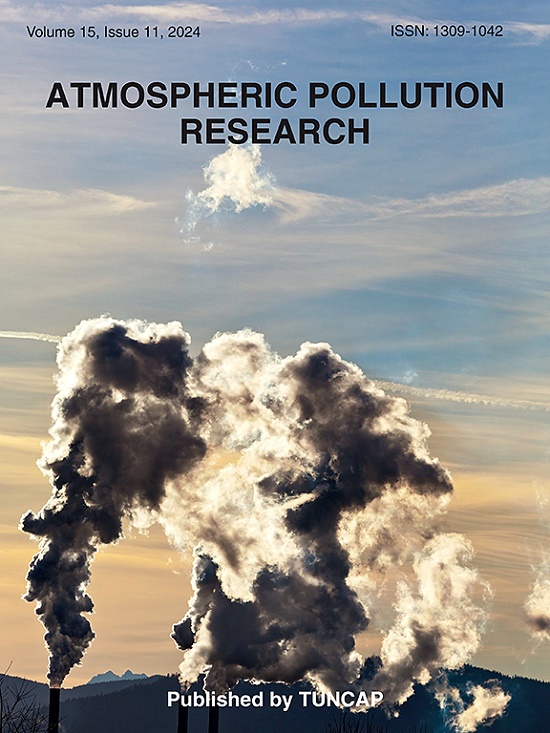Novel algorithm for using the Sky Quality Meter as a night cloud detector and aerosol concentration meter
IF 3.5
3区 环境科学与生态学
Q2 ENVIRONMENTAL SCIENCES
引用次数: 0
Abstract
The measurement of aerosol optical depth (AOD) has great multidisciplinary importance (e.g. climate change, human health, meteorological models). This work describes a novel algorithm for AOD measurement using a Sky Quality Meter (SQM). SQM measures night sky brightness (NSB) and it is mainly used for monitoring light pollution (LP). The algorithm adds the ability to estimate the AOD under clear sky conditions to the already published use of the SQM as a night cloud detector (CD).
The aerosol concentration meter (ACM) algorithm is applied to two-year measurements (2021–2022) at three sites. Two sites are of astronomical importance, such as the Ekar astronomical observatory (Asiago, Italy) and the La Silla astronomical observatory (Chile). The two sites allow calibration of the algorithm under high-LP and practically no-LP conditions. In addition, the Padua site (Po Valley, Italy) tests the algorithm in critical conditions of atmospheric dust concentration and LP. An accurate error analysis is described, and the algorithm is validated through comparison with Moderate Resolution Imaging Spectroradiometer (MODIS) satellite data. The complexity of the NSB-aerosol interaction in relation to the scattering phenomenon in the three sites of Padua, Ekar and La Silla involves limits on the AOD daily analysis, but SQM-ACM algorithm has its best application in monthly AOD statistics with respective relative errors of 0.10, 0.07 and 0.04.
使用天空质量计作为夜间云探测和气溶胶浓度计的新算法
气溶胶光学深度(AOD)的测量具有重要的多学科意义(如气候变化、人类健康、气象模式)。本文描述了一种利用天空质量计(SQM)测量AOD的新算法。SQM测量夜空亮度(NSB),主要用于光污染监测。该算法增加了在晴空条件下估计AOD的能力,使SQM作为夜间云探测器(CD)的使用已经公布。气溶胶浓度计(ACM)算法应用于三个站点的两年测量(2021-2022)。有两个地点在天文学上具有重要意义,如埃卡尔天文台(意大利阿齐亚戈)和拉西拉天文台(智利)。这两个站点允许在高lp和几乎无lp条件下校准算法。此外,帕多瓦站点(意大利波谷)在大气尘埃浓度和LP的临界条件下测试了该算法。对该算法进行了精确的误差分析,并与MODIS卫星数据进行了对比验证。在Padua、Ekar和La Silla三个站点,nsb -气溶胶相互作用与散射现象的复杂性给AOD的日分析带来了限制,但SQM-ACM算法在AOD的月统计中最适用,相对误差分别为0.10、0.07和0.04。
本文章由计算机程序翻译,如有差异,请以英文原文为准。
求助全文
约1分钟内获得全文
求助全文
来源期刊

Atmospheric Pollution Research
ENVIRONMENTAL SCIENCES-
CiteScore
8.30
自引率
6.70%
发文量
256
审稿时长
36 days
期刊介绍:
Atmospheric Pollution Research (APR) is an international journal designed for the publication of articles on air pollution. Papers should present novel experimental results, theory and modeling of air pollution on local, regional, or global scales. Areas covered are research on inorganic, organic, and persistent organic air pollutants, air quality monitoring, air quality management, atmospheric dispersion and transport, air-surface (soil, water, and vegetation) exchange of pollutants, dry and wet deposition, indoor air quality, exposure assessment, health effects, satellite measurements, natural emissions, atmospheric chemistry, greenhouse gases, and effects on climate change.
 求助内容:
求助内容: 应助结果提醒方式:
应助结果提醒方式:


